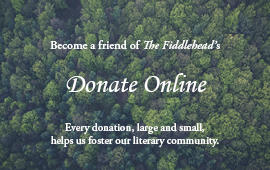By Tyler Dunning
Before taking up the pen to transform experience into personal essay, I’d learned storycraft from a different source. That is, I wasn’t your typical reader who’d resolved to write novels since first discovering Goosebumps or the Redwall series. Nor did I study literature in undergrad or acquire an MFA in anything creative. But I do have a history as a professional wrestler.
Of course, this wasn’t an accolade I paraded around the snug folds of academia-driven writing retreats or laurel-dependent residencies. Instead, when speaking with agents and editors, I stuck to my nature-heals-trauma schtick by pitching them my first book, A Field Guide to Losing Your Friends. But you don’t write memoir without all your nuclear pockets of backstory percolating to the present; my secrets found no shade under self-promotion.
To my surprise, however, each player in this enterprise of intelligentsia not only took interest in my past, but bordered infatuation, all begging questions of my origin story, my hero’s journey, my inevitable heartbreak within an industry designed to break you — professional wrestling.
I started scribing my yesteryears.
In The Fiddlehead’s upcoming, and first-ever, creative nonfiction issue, I offer insight into this world with an essay entitled “Eldon, Missouri,” named after the town that fostered my wrestling career. In it, I express what first drew me to the enterprise:
You wouldn’t assume it, but wrestling is an art, like ballroom dancing, with a kinetic intelligence that couples muscle memory with storytelling, athleticism with in-ring psychology. It’s the way timing dictates flow, with two people hoping all their training will make slow motions look fast — will make “fake” look real. It’s the undeniable “pop” of a forearm landing in the sweet spot of an opponent’s neck. It’s telling the crowd a story that heightens the range of their emotional response though ups and downs, villainous cutoffs, hope spots, hot comebacks, and then taking the match to its climatic end. Wrestling is an art, and like my fellow Montanan Norman Maclean said, “All good things — trout as well as eternal salvation — come by grace and grace comes by art and art does not come easy.”
Wrestling taught me how to write. It taught me how to travel. It taught me how to turn pain into performance. And with that I offer you a window into my original muse: Rey Mysterio Jr vs Eddie Guerrero from 1997. The former, Mysterio, is the performer who first hooked me (while I was fourteen and channel surfing). I found him when he was the wonder child of the business, a sprite twenty-one-years old, though now he’s many bumps and knee surgeries beyond that. Guerrero became a fast favorite too, but a cautionary tale to wrestling’s reality: he passed of a heart attack at age thirty-six. But technology can act as a time machine, granting us passage back to experiences we can never experience again. This video once made me a dreamer. Now it makes me a writer —
With words. With retrospect. With a weakness akin to withdrawal. Enjoy.











Add new comment